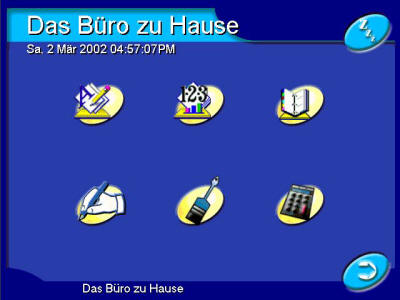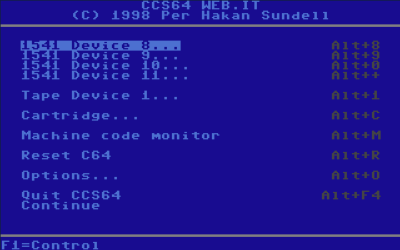Commodore 64 Web.it
This computer is very loosely associated with
Commodore 64. In 1994, Commodore was after their best times and after
trying to sell overly expensive PC clones, they filed bankruptcy. The
thing which could be sold to compensate losses was a trademark which was
sold to Escom - a German PC giant which sold re-branded PC components.
They tried to do something with Amiga, but in 1996 they went to
liquidation too. The Escom Netherlands inherited the Commodore trademark
and they quickly got down, being bought by Tulip Computers. Literally
every company messing with Commodore name got into troubles - this is
sometimes called "curse of Commodore". In 1998 open licensing, similar
as with Gateway2000, allowed to build machines and sell them under
Commodore brand. This is an effect of such agreement with Web Computers
International (a Belgian? company), when machine totally not
Commodore-like built to order by some ?Asian? manufacturer has been sold
as Commodore.
Inside, this is a small, all-in-one PC, powered by AMD ELAN SC405
processor (486-like) running 66-100MHz, with 16MB of RAM, 16MB of ROM
with some flash and a modem. It was upgradeable with PCMCIA cards. The
built-in software based on MS-DOS and specially adapted Windows 3.x
allowed to use the Internet and work in some productivity applications.
Thanks to built-in CCS64 emulator it was also possible to run some
Commodore 64 software, but it was not exceptionally good emulator and
media emulation was quite poor. There was no hard disk, only 1.44MB
3.5-inch floppy drive, although built-in Prime2 I/O controller allowed
to connect IDE drive (there was a connector, but no space for one).
The machine has a typical PC keyboard with some keys renamed and a
touchpad which could be used with a pen. It was possible to connect the
machine to TV, so buying expensive monitor was not needed, although
there is a VGA output too. There is a sound input/output, serial and
parallel port, as well as infrared link - a popular method to exchange
small amounts of data in 1990s.
The machine ended like all Internet client appliances these days - when
built-in Netscape Navigator 3 and Lotus software became unfeasible for
WWW's development, it was over. And before, it was not too popular too,
it got some purchases based on brand, but that causes signifiacnt
disappointing. Full computers going cheaper finally ended the business
of "Internet appliances".
If I could recommend some material about end times of Commodore, I would
not recommend any modern movie, but the classic 1994 documentary called
The Deathbed Vigil.
I know, it's more around Amiga and has a relatively poor quality, but
you are literally watching the last days of Commodore from inside.
| Manufacturer | Web Computers / Commodore | |
| Origin | Nederlands / Belgium | |
| Year of unit | 1998 | |
| Year of introduction | 1998 | |
| Class | All-in-one PC | |
| CPU | AMD Elan SC405 | |
| Speed | 100MHz | |
| RAM | 16MB | |
| ROM | Phoenix BIOS | |
| Graphics | On board CyberPro 2010 | |
| Sound | SoundBlaster-like chip onboard | |
| System expansion bus | PCMCIA | |
| Floppy/removable media drives | 3.5" 1.44MB
floppy drive IDE port (not used) |
|
| Hard disk: | 16MB of ROM / Flash | |
| Other boards: | Modem expansion | |
| Non-standard expansions: | - | |
| Operating system(s): | MS-DOS / Windows 3.x adaptation |
The history of my machine is not known. Inside it has some hacks, but they look like factory-made: ROM board is installed in place of two Amiga-like ROMs, by using poor extensions made with DIP sockets cut. RAM stick seems to be patched too, probably to pull some signal. It came to me in quite neglected state, was probably disassembled earlier, and the only thing I'm sure it works is floppy drive. It boots VGA screen and halts there, so it's probably some problem around BIOS.
These machines were popular mostly in Germany and in
some neighbouring countries.
| Contents: | Starting, usage | Links |
http://amiga.emugaming.com/c64web.html - a description
https://www.betaarchive.com/forum/viewtopic.php?t=39285 - EmbOS
translation to English, for PC virtualization.
https://www.mingos-commodorepage.com/sammlung/systemedetail.php?id=49
- Photos of running unit and German description.
http://www.spacereh.de/hc/com/web64.htm - In German collection
http://web.archive.org/web/20170701170712/https://retroport.de/C64_C128_2.html
- Description and detailed photos
https://microhobby.speccy.cz/stalvsmvsevm/webits.htm - In collection







